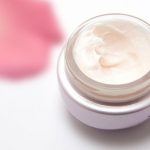Clean and safe drinking water is a fundamental requirement for a healthy life. While cities treat their water, some individuals remain concerned about potential contaminants. To ensure the water is of the highest quality and safety, many homeowners opt for under-sink water filters. These filters are effective and user-friendly. In this guide, we’ll delve into the functionality of these filters and discuss their significance in households.
The Need for Water Filtration
You know how it’s important to drink clean water, right? Despite water treatment plants being effective, occasional contaminants may still enter our water supply. These icky things can be:
- Chlorine and Chloramine: These are chemicals that help make water safe, but if there’s too much, water might not taste good.
- Sediments: Tiny pieces of things like sand, rust, and dirt can make water look cloudy and not safe to drink.
- Heavy Metals: Like lead and mercury, which can come from old pipes or factories, and they’re not good for us.
- Microorganisms: These are tiny living things like bacteria and viruses that can make us sick if they’re in the water.
- Chemical Contaminants: Some chemicals from pesticides, medicines, and other stuff can get into the water, and we don’t want that.
- Volatile Organic Compounds (VOCs): These are chemicals that can turn into gas and mix with the water, making it not safe to drink.
Thus, we turn to devices known as water filters. They’re like superheroes for water! Under-sink water filters are particularly advantageous because they discreetly fit under the kitchen sink, ensuring clean water. They have special powers to get rid of all the icky stuff, so the water you drink and use for cooking is safe and tastes good. That’s why they’re so popular!
Understanding Under-Sink Water Filter Systems
Under sink water filter systems are compact, convenient devices that fit neatly under your kitchen sink. They are designed to filter water directly from your tap, providing you with purified water on demand. Let’s explore the technology and components that make these systems work.
1. Filtration Technologies
Under-sink water filters have different ways to clean your water. Here are some of the methods they use.
- Carbon Filtration: These systems utilize activated carbon filters adept at eliminating undesirable tastes, odors, and chemicals from water. It’s like a sponge that soaks up the yucky stuff.
- Reverse Osmosis (RO): Some filters have a super filter called “reverse osmosis” that can remove even tinier things like heavy metals and tiny creatures that can make you sick. It makes the water super clean.
- Sediment Filtration: They also have filters that are like a net, which catch bigger things like sand and dirt. These filters are usually the first line of defense to keep the water clean.
- UV Filtration: In some filters, they use special lights to zap tiny bad things like bacteria and viruses. This keeps the water safe to drink.
- Ion Exchange: There are filters that can swap out bad things in the water for good things. This is especially good for getting rid of heavy metals like lead and making the water taste better.
Each of these methods plays a crucial role, akin to tools in an expert’s toolkit, ensuring water purity and safety.
2. Filter Cartridges
Imagine under-sink filters as having special cartridges, like superheroes with unique powers. Each has a specific function:
- Pre-filters: These are like the first line of defense, catching bigger stuff like dirt.
- Carbon filters: These are the taste and smell fixers, getting rid of chemicals.
- RO membranes: They’re like the super detectives, catching even tinier things to make water super clean.
So, these filter superheroes work together to keep your water safe and tasty!
3. Storage Tank
Many reverse osmosis systems feature a storage tank to store the purified water. This allows for a continuous supply of filtered water even when the tap is turned on. The storage tank helps maintain water pressure and ensures you have purified water readily available.
4. Faucet and Dispensing
Under-sink water filter systems come with a separate faucet or dispenser, which is usually installed on your kitchen sink. This faucet is exclusively used for dispensing the filtered water. It ensures that you can access purified water without contaminating it with untreated water from the main faucet.
5. Installation and Maintenance
These systems need experts to set them up, but after that, they’re not much work. You just need to change some parts every now and then, like every six months to a year. This helps the system keep working right. So, it’s easy to look after!
How Under-Sink Water Filter Systems Work
Consider under-sink water filter systems as essential safeguards for water quality. Their primary role is to purify and sanitize tap water. Here’s how they do it:
- Water Source: They start with the water from your tap. This water can have yucky stuff in it, like chlorine, dirt, and other things that are not good for you.
- Sediment Filtration: First, the water goes through a filter that catches big things like sand and rust. This helps keep the water clean.
- Activated Carbon Filtration: After that, the water passes through another filter that’s like a sponge. It soaks up things like chlorine and bad smells, so your water tastes and smells better.
- Reverse Osmosis (if it’s there): Some superhero filters have a special part called “Reverse Osmosis.” It’s like a super filter that can remove even tinier things, like dangerous metals and tiny living things that can make you sick.
- Ion Exchange (if it’s there): If there’s a part called “Ion Exchange,” it helps remove heavy metals and makes sure the water has good stuff in it.
- Storage Tank (if it’s there): If there’s a storage tank, the cleaned water goes there to wait until you need it.
- Dispensing: When you turn on a special faucet or a dispenser, the clean water comes out. It’s safe to drink and cook with because it doesn’t have the yucky stuff in it.
So, these under-sink water filter systems are like the guardians of your tap water, making sure it’s always clean and safe for you to use.
Maintenance and Replacement
Proper care of your under-sink water filter ensures its continued efficiency. Consider the following essential maintenance steps:
- Filter Replacement: Regularly replace filter cartridges according to the manufacturer’s recommendations. This is essential to maintain the system’s filtration effectiveness.
- Sanitization: Periodically sanitize the system, especially if it includes UV or RO components. Sanitization helps prevent the growth of bacteria and ensures the system continues to produce clean water.
- Leak Detection: Regularly inspect the system for leaks or any signs of wear and tear. Address any issues promptly to prevent water damage.
- Professional Service: Some maintenance tasks may require the expertise of a professional. If uncertain about any maintenance aspect, seek professional assistance.
Conclusion
Under-sink water filters are like secret helpers in your home. They make sure your tap water is clean and safe to drink. They use special technology to remove stuff that makes water taste bad, smell weird, or might make you sick.
If you get the right one and take care of it, you’ll save money, help the environment, and feel confident about your water. So, if you worry about your water or just want it to taste better, think about getting one of these filters for your home. It’s akin to having a vigilant guardian for your water in the kitchen. By adopting this technology, you significantly enhance your family’s health and well-being.







